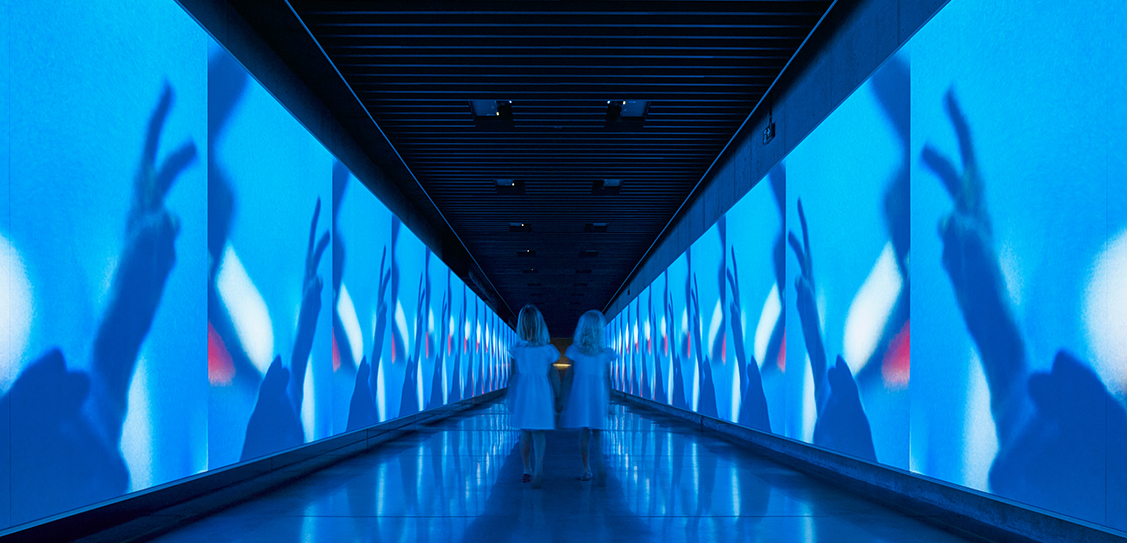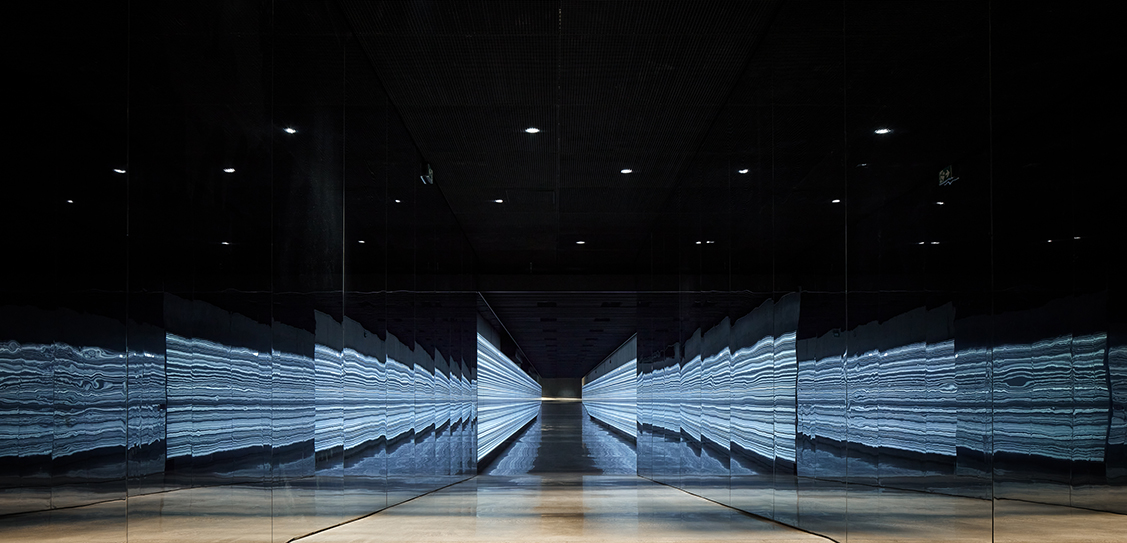The corridor is a raw concrete shell connecting places, transferring information, and organising people. A cast of free underground volume in between the city's infrastructure; three bodies with a length of 56 m were inserted, creating space for time transmission.
Wenceslas Square is a key public space in the Czech Republic; a venue that has hosted important events, marking the nation's historical crossroads. The past century of Czech Republican history and its story of architectural development is projected on the two 720 m long facades of the square.
To be sufficiently authentic, the most modern audio-visual technologies had to be combined with respectable technical parameters. The 56 m long corridor is covered on both sides with a continuous projection with an area of almost 270 sq m, projected by a total of 38 laser projectors with ultrashort mirror lenses.
The original Gothic square with Renaissance and Baroque houses were transformed into a generous boulevard during the 19th and 20th centuries,becoming the centre of modern Prague. The houses are witnesses of this transformation, reflecting the ambitions and style of their time.
Changes to the 60 buildings within today's square are processed in a time-lapse animation. One second of animation is one real year. Between the years 1860 to 1939, 66 changes occurred, in the years between 1939 2019 only 14 changes occurred.
In 1875, trees were planted but subsequently were cut down and then replanted. The gas candelabra were replaced by the Křižík lamp on the eve of the electrification only later to be replaced again, this time by neon facades. The darkness of the war bombing turned into the illumination of communist banners and then into the current smog of the LED night. While in the 1930s the windows of residential houses shone with life, they remain dark today and only shop windows are lighted up.
In the prologue of the film, the visitor can see what was in the area of Wenceslas Square during the Paleozoic seas or at the very beginning of the universe.
At the turn of the millennium, visitors are treated to the euphoria of the 1989 revolution before finding themselves in the middle of emptied rituals of normalisation. Another turning point is the occupation of 1968. In the 1950s, the public space was full of celebrations of communist totalitarianism. Shortly before the onset of communism, people stand in the square and forcefully express loyalty under Nazi rule. Everything is preceded by sincere faith in the Czechoslovak Republic after 1918.
The materials filmed on Wenceslas Square are presented as museum exhibits. Each of the topics is represented by eight situations that are repeated across all events. They are divided into two categories; action and reaction. The action consists of shots of the symbol, driving forces, and situations. The reaction contains shots of individuals and the crowd.
With its resolution, this project represents the largest continuous projection in Europe, but at the same time, it is exceptional on a global scale.



